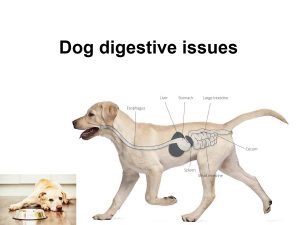Have you ever come across a malnourished dog and wondered how you can help? Malnourishment in dogs is a serious issue that can have detrimental effects on their overall health and well-being. Whether you’ve adopted a malnourished dog or have encountered one in your neighborhood, it’s important to know how to provide them with the proper care and nutrition they need to thrive. In this article, we will explore the various aspects of caring for a malnourished dog, including nutrition, veterinary care, and emotional support.
1. Section 1: Recognizing the Signs of Malnourishment
Before we delve into the steps of caring for a malnourished dog, let’s first discuss how to recognize the signs of malnourishment. Malnourished dogs often exhibit the following symptoms:
- Visible ribs, hip bones, and spine
- Lack of muscle mass and overall body condition
- Dull or dry coat
- Lethargy or fatigue
- Poor appetite or excessive eating
- Weakness or difficulty walking
If you notice these signs in a dog, it’s crucial to take immediate action to provide them with the care they need.
2. Section 2: Making Dietary Changes
One of the first steps in caring for a malnourished dog is to ensure they receive proper nutrition. Consult a veterinarian to create a tailored meal plan that meets their specific needs. Here are some important considerations:
2.1. High-Quality Dog Food
Switching the dog to a high-quality dog food is essential. Look for brands that contain premium ingredients without fillers or artificial additives. Opt for formulations that are specifically designed for malnourished dogs, as they often contain higher levels of protein and essential nutrients.
2.2. Feeding Schedule
Establish a regular feeding schedule to help the dog develop a routine. Dividing their daily food intake into multiple smaller meals can also be beneficial, especially if they have a poor appetite or difficulty digesting larger meals.
2.3. Nutritional Supplements
In some cases, malnourished dogs may require nutritional supplements to support their recovery. These supplements, such as omega-3 fatty acids or multivitamins, can help address any nutrient deficiencies and promote healthy growth.
2.4. Gradual Transition
When introducing a new diet to a malnourished dog, it’s important to do so gradually. Abrupt dietary changes can cause digestive upset or a refusal to eat. Start by mixing a small amount of the new food with their current food and gradually increase the proportion over several days.
3. Section 3: Veterinary Care and Health Assessments
Caring for a malnourished dog goes beyond just providing proper nutrition. Regular veterinary care and health assessments are crucial to monitor their progress and address any underlying health issues. Here are some important considerations:
3.1. Veterinary Examination
Schedule a comprehensive veterinary examination for the malnourished dog. The veterinarian will perform a thorough physical examination, assess their body condition, check for any underlying medical conditions, and recommend appropriate diagnostic tests if necessary.
3.2. Parasite Control
Parasites, such as fleas, ticks, and intestinal worms, can further weaken a malnourished dog’s immune system and impede their recovery. Ensure that the dog receives necessary parasite prevention and treatment under the guidance of a veterinarian.
3.3. Vaccinations
Ensure that the dog is up to date on vaccinations to protect them from preventable diseases. Vaccinations are especially important for malnourished dogs, as their weakened immune systems make them more susceptible to infections.
3.4. Regular Check-ups
Schedule regular follow-up appointments with the veterinarian to monitor the dog’s progress and make any necessary adjustments to their care plan. These check-ups are vital to ensure the dog’s overall well-being and provide ongoing support.
4. Section 4: Emotional Support and Rehabilitation
Malnourished dogs often require emotional support and rehabilitation to help them regain their confidence and trust in humans. Here are some essential aspects to consider:
4.1. Patience and Understanding
When caring for a malnourished dog, it’s important to approach them with patience and understanding. Understand that they may have experienced neglect or trauma, and it will take time for them to trust and bond with their new caregivers.
4.2. Socialization
Gradually introduce the dog to new environments, people, and other animals to help them develop social skills and overcome any fear or anxiety they may have. Start with controlled environments and slowly increase exposure as the dog becomes more comfortable.
4.3. Positive Reinforcement Training
Using positive reinforcement techniques, such as treats, praise, and rewards, can be highly effective in training a malnourished dog. This approach encourages good behavior and helps build a strong bond between the dog and their caregiver.
4.4. Enrichment Activities
Engage the malnourished dog in various enrichment activities to stimulate their mind and body. This can include puzzle toys, interactive feeders, and daily exercise to promote their overall well-being and provide a positive outlet for their energy.
4.5. Professional Help
In some cases, it may be beneficial to seek assistance from a professional dog trainer or behaviorist who specializes in working with malnourished or traumatized dogs. These professionals can provide valuable guidance and expertise to support the dog’s rehabilitation journey.
5. Conclusion
Caring for a malnourished dog requires a holistic approach that encompasses proper nutrition, veterinary care, and emotional support. By recognizing the signs of malnourishment, making necessary dietary changes, seeking veterinary care, and providing emotional rehabilitation, you can help a malnourished dog on their journey to recovery. Remember, patience, love, and understanding are key in rehabilitating these dogs, and the reward of seeing them thrive is immeasurable. If you come across a malnourished dog, don’t hesitate to reach out and make a difference in their life. Together, we can ensure they receive the care they deserve.


